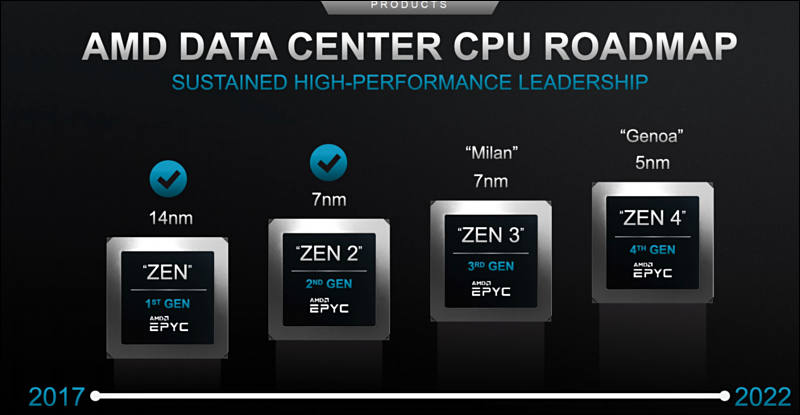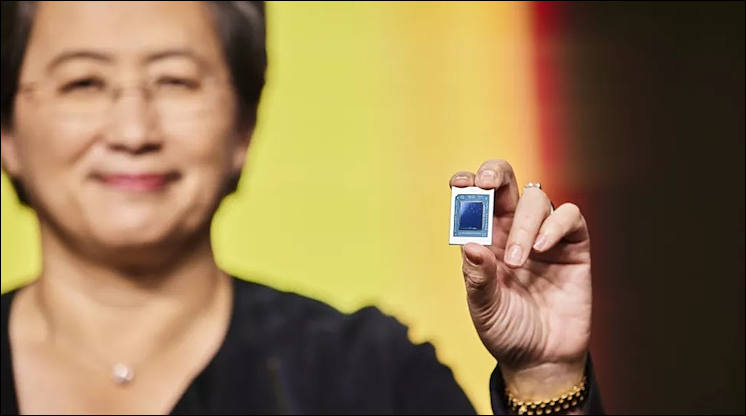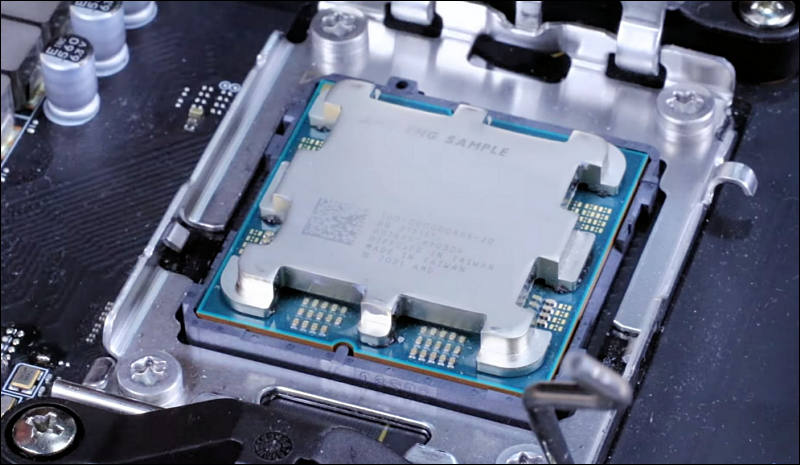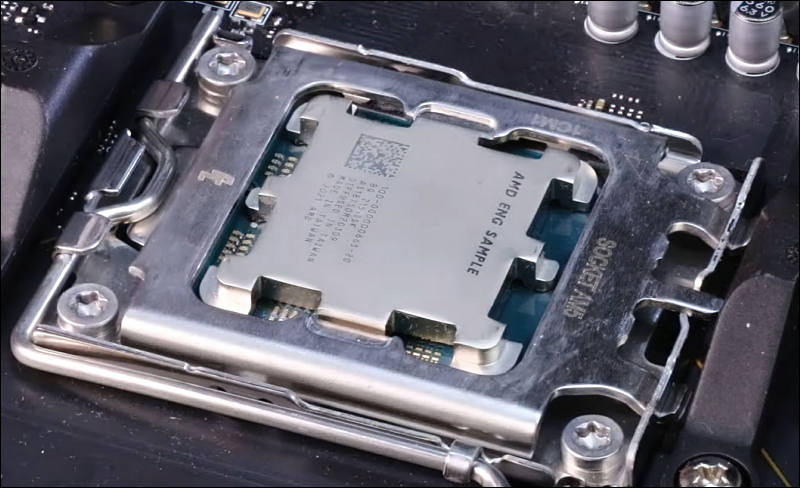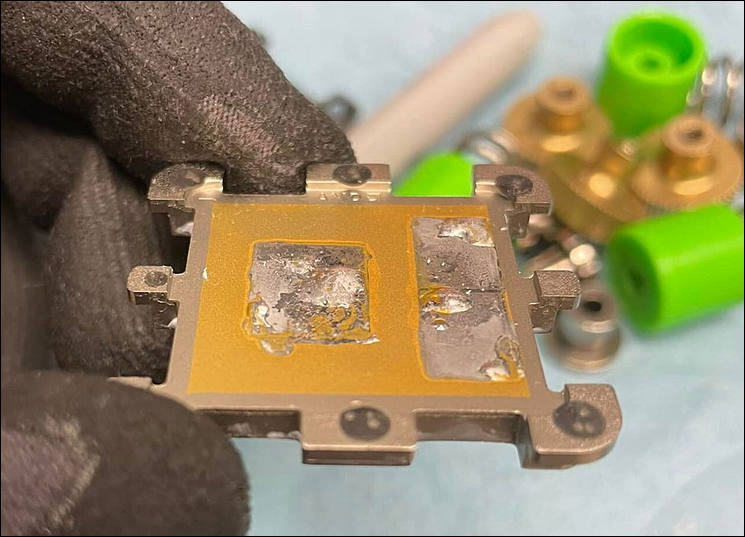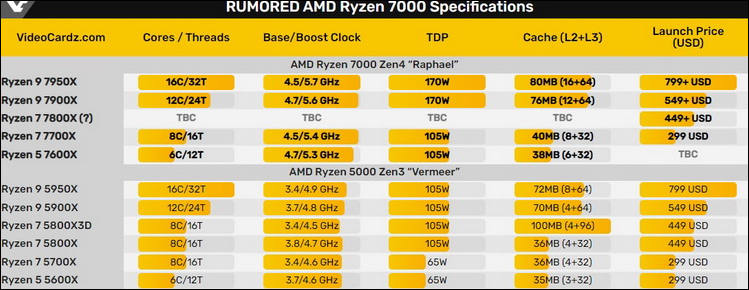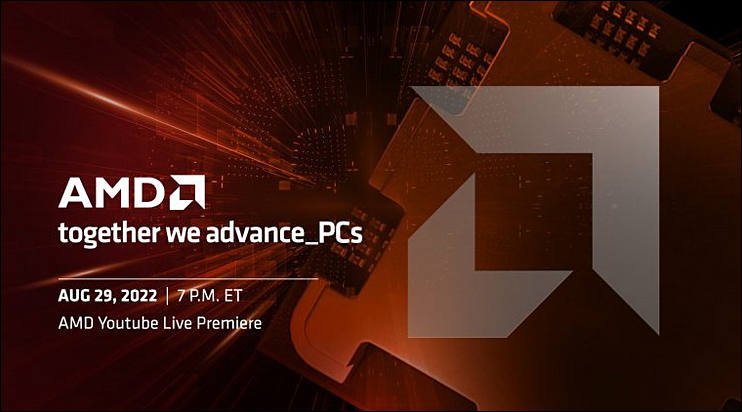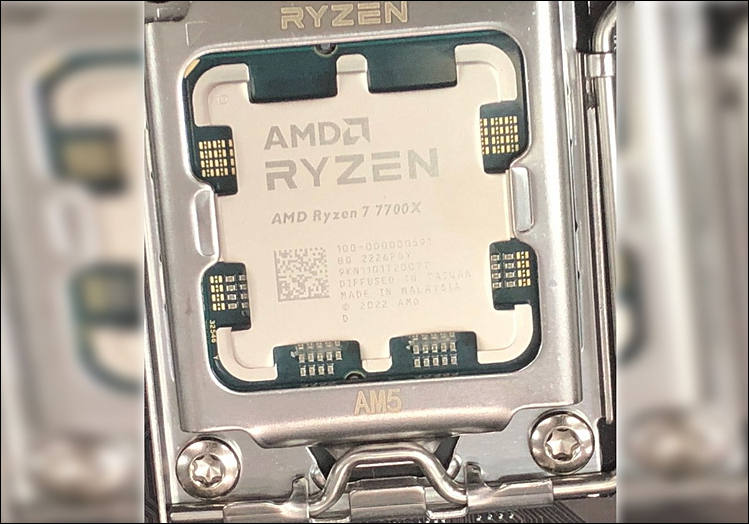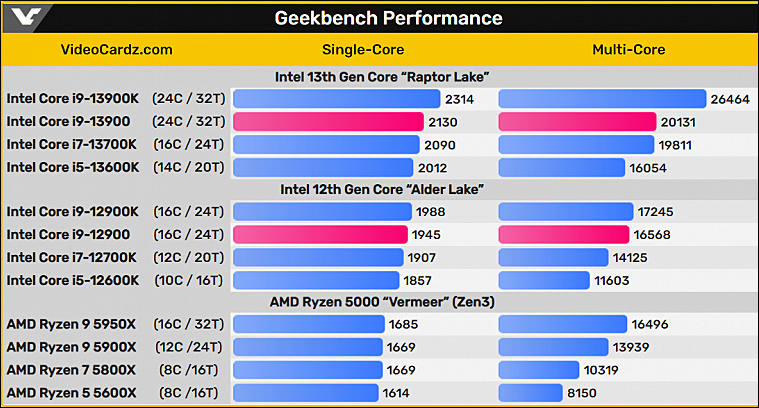
It allows to keep PV going, with more focus towards AI, but keeping be one of the few truly independent places.
-
Present industry rumors collected
- Performance per core increase will be below 4% and can be even negative
- Core counts per chiplet won't increase and will stay at 8 cores
- Cache size can increase by around 50-75%
- Chip will offer dual channel DDR5 support, AMD still having issues with memory controller
- AMD can restrict usage of external USB controllers and can ask for special license payment for such use
- TSMC have major issues with performance version of 5nm process (now only low power version is offered)
- AMD now has severe thermal issues, test chips can't reach even 3.5Ghz without thermal damage
- CPU prices will jump around 30-50% for same positioned model in lineup
- Chipset prices will jump 20-35%
- Motherboard prices will jump 25-45% due to components inflation and chipset price
- AMD will restrict features for entry level and mid level chipset very similar to Intel offerings
- AMD will turn all marketing to focus on mobile chips (around 80% of marketing expenses)
- AMD will also participate in the anti desktop marketing under green economy taglines (your desktop is major contributor of global warming)
AMD plans to migrate to the AM5 platform, bringing the new DDR5 and USB 4.0 protocols. The current aim of Zen 4 is to be extremely competitive among competing products and to bring many IPC improvements. Just like Zen 3 used many small advances in cache structures, branch prediction, and pipelines, Zen 4 is aiming to achieve a similar thing with its debut. The state of x86 architecture offers little room for improvement, however, when the advancement is done in many places it adds up quite well, as we could see with 19% IPC improvement of Zen 3 over the previous generation Zen 2 core. As the new core will use TSMC's advanced 5 nm process, there is a possibility to have even more cores found inside CCX/CCD complexes. We are expecting to see Zen 4 sometime close to the end of 2021.
-
- The top SKU will be limited to 16 cores which implies two full compute tiles.
- Based on TSMC 5nm fabrication node
- 170w TDP (real thermal dissipation will reach 250-270 watts)
- DDR5 support
- LGA1718 socket aka AM5
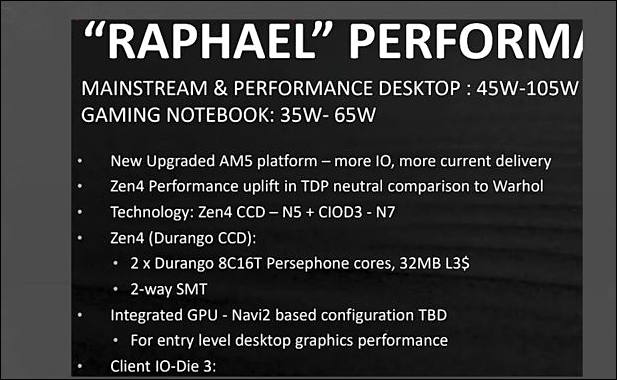

 sa17678.jpg617 x 380 - 46K
sa17678.jpg617 x 380 - 46K -
AMD CTO Mark Papermaster in an exclusive interview with Forbes journalist Antony Leather confirmed that at CES 2022 the company will also talk about the new Zen 4 architecture. However, the main part of the presentation will be devoted to news about Zen 3 architecture update with 3D V-Cache technology.
"As for the future generation. We will be happy to provide some additional details about our future updates. We'll share some of the Zen 4 architecture highlights at CES, and we'll share more later throughout the year. On the whole, 2022 promises to be an amazing year for the company,” - commented Papermaster.
-
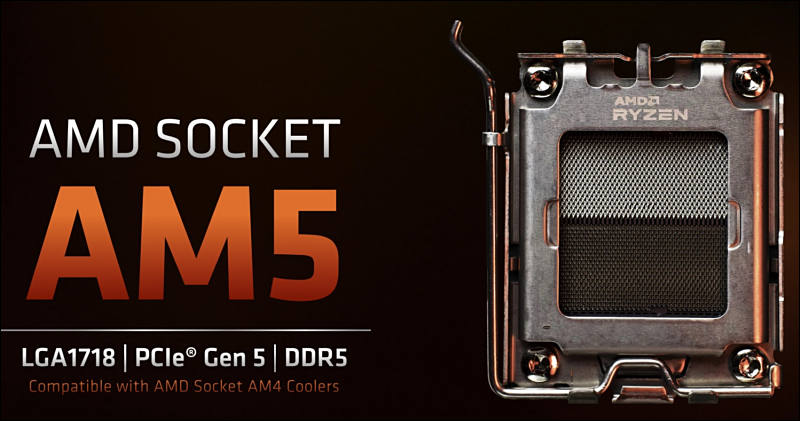
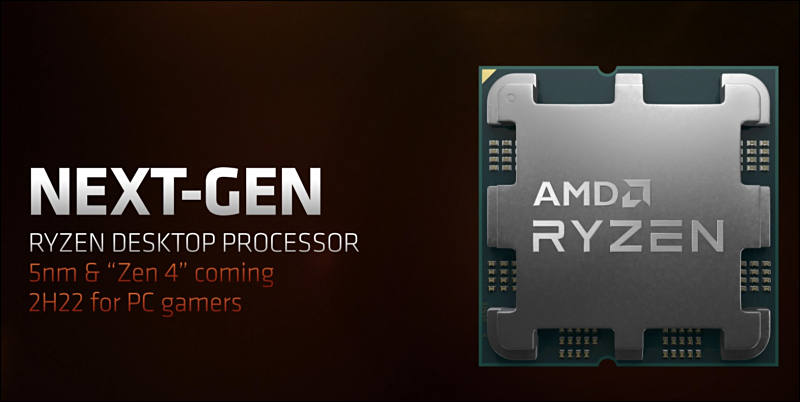
- 5nm
- PCIe 5.0
- DDR5 support
- LGA 1718 socket

 sa19159.jpg800 x 421 - 54K
sa19159.jpg800 x 421 - 54K
 sa19160.jpg800 x 402 - 34K
sa19160.jpg800 x 402 - 34K -
AMD reaffirms its Ryzen 7000 series will support PCIe Gen5 standard as well as DDR5 memory technology. The LGA1718 socket will retain compatibility with AM4 coolers. Furthermore, the rumor about high-power TDP SKUs has been confirmed. The next-generation AM5 socket will support up to 170W, however, this is not mentioned for Ryzen 7000 specifically.
In terms of performance, AMD is claiming its Zen4 core architecture will offer over 15% single-thread uplift, 2X bigger (1MB) L2 cache per core and Max Boost over 5 GHz.
Furthermore, AMD has finally revealed what is under the new heatspreader. There are two 5 nm Zen4 core chiplets and one 6nm I/O. There is clearly no room for a third CCDs, but there is really no way to tell how will this design evolve in next generations.
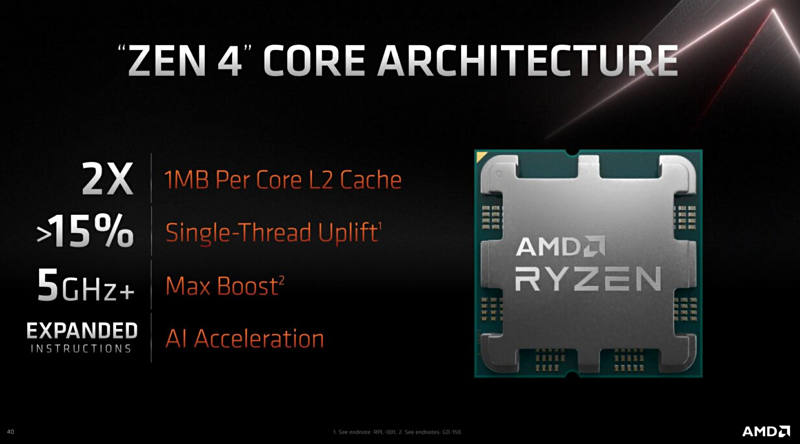
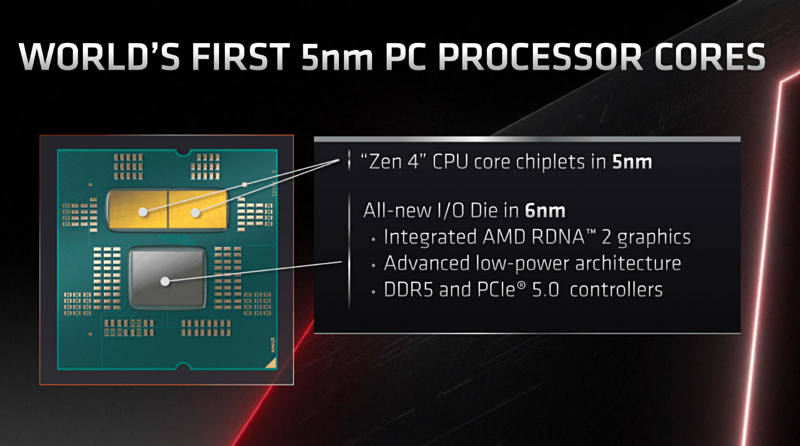

 sa7084.jpg800 x 444 - 39K
sa7084.jpg800 x 444 - 39K
 sa7085.jpg800 x 446 - 49K
sa7085.jpg800 x 446 - 49K -
On TDP
Tom's Hardware was able to get new clarifications from AMD representatives, who nevertheless found out that for the Socket AM5 platform the TDP limit is 170 W, and the PPT value is obtained by multiplying the TDP by 1.35, which ultimately gives 230 W. It is this electrical power that the Socket AM5 processor socket is capable of delivering, and it is precisely this maximum heat dissipation that the Ryzen 7000 processors will be capable of. Robert Hallock subsequently had to admit that TDP is indeed 170 W, and PPT reaches 230 W.
Socket AM4 Ryzen processors have a TDP of no more than 105W, while the PPT value was 142W. In the new platform, the power consumption ceiling has been raised from Socket AM4 to make it easier for older processors with a large number of cores to work in high-load situations.
-
An AMD representative confirmed that Ryzen 7000 processors will be able to offer up to 16 physical cores with support for up to 32 virtual threads. At the same time, the level of energy consumption of some chip models will reach 170 watts, and peak - more than 230 watts. He also shared some other interesting details about the AM5 platform, next-gen Ryzen chips, and upcoming products.
Hallock also confirmed that Ryzen 7000s support AVX-512 instructions. In an interview with TechPowerUp, he said that the company used the AVX 512 VNNI and BFLOAT16 / BF16 instructions as part of the presentation of the chips. They are actively used by TensorFlow, AMD ROCm and even NVIDIA CUDA libraries.
-
Integrated Ryzen 7000 graphics will be "standard". It is based on a 6-nm process technology and contains a small number of built-in computing units. Its main tasks are to provide support for video encoding and decoding and the operation of several video outputs. For enthusiasts, "embedding" will help diagnose a discrete video card in the system. The integrated graphics configuration will be the same for all Ryzen 7000 Raphael series processor models.
Hallock also added that the presence of integrated graphics as part of all Ryzen 7000 processors does not mean the company is abandoning hybrid processors (APUs) in the desktop chip environment. In the future, processors for Socket AM5 with a powerful integrated graphics core will also appear on the market. That is, we can expect the release of conditional Ryzen 7000G.
“We do not consider Ryzen 7000 series processors as APUs. Yes, Ryzen 7000 also have integrated graphics, but they are different solutions. For us, APU is a product with powerful integrated graphics that can run games and has all the capabilities to encode and decode video and so on. The Ryzen 7000 "insert" is intended only to display a picture on the screen, offer basic video processing capabilities, launch a home theater, and some work applications. But this graphics is not game level. APUs are an integral part of our roadmap.
-
Performance gains slides
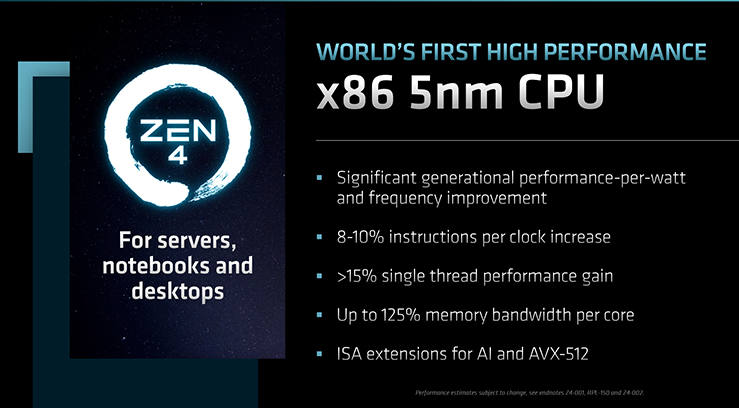
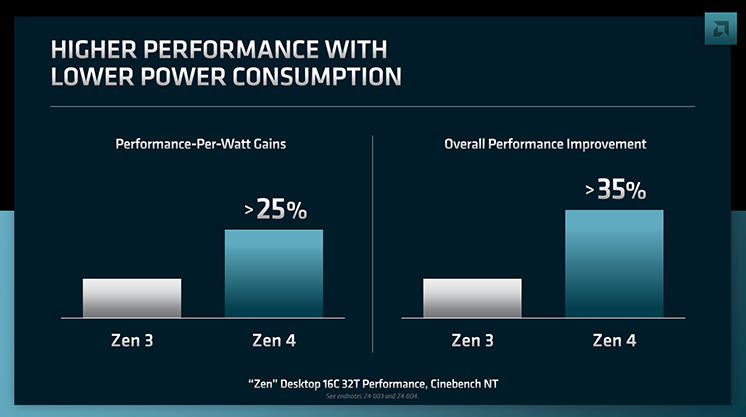

 sa7134.jpg739 x 408 - 46K
sa7134.jpg739 x 408 - 46K
 sa7135.jpg746 x 417 - 34K
sa7135.jpg746 x 417 - 34K -
MSI indirectly confirmed through the Chinese social platform Weibo that the official presentation of AMD Ryzen 7000 processors based on the Zen 4 architecture, as well as motherboards designed for them with a Socket AM5 processor, will take place on September 15th.
-
Compared to the current generation of Ryzen, they are much faster. Single-core performance increased by 20% and multi-core performance by 22% for the Ryzen 7 7700X and an incredible 40% for the Ryzen 9 7950X.
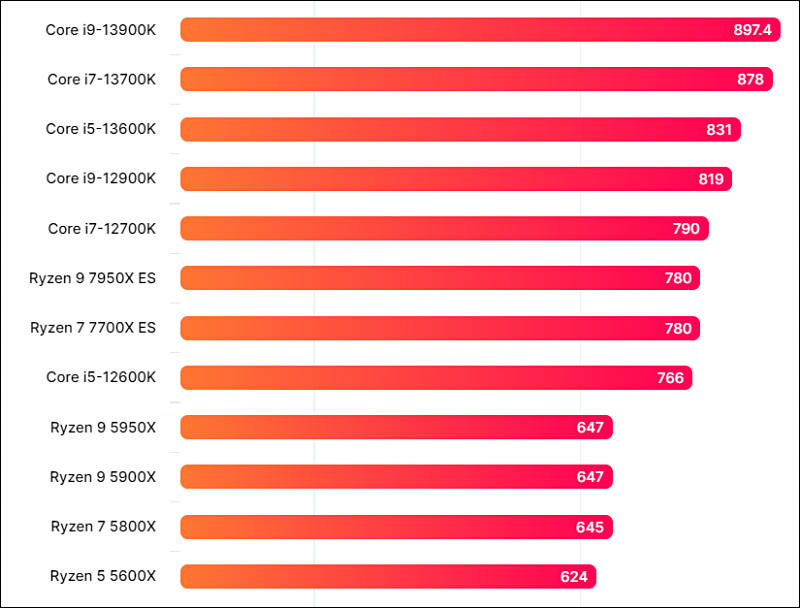
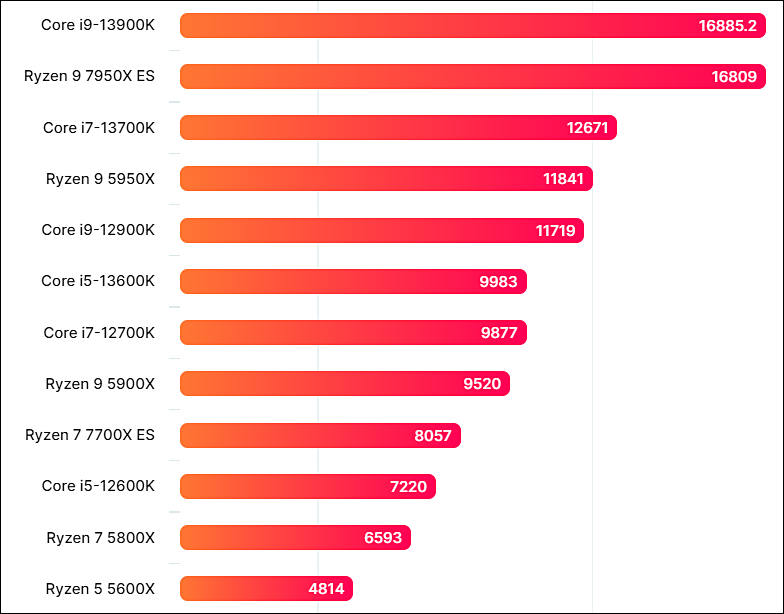

 sa7235.jpg800 x 608 - 71K
sa7235.jpg800 x 608 - 71K
 sa7236.jpg784 x 614 - 67K
sa7236.jpg784 x 614 - 67K -
AMD Ryzen 7000’s CCD manufactured with TSMC N5 node features 6.57 billion transistors, 58% more than Zen3 based on TSMC N7. The CCD codenamed “Durango” is AMD’s next-gen chiplet featuring up to eight Zen4 cores codenamed “Persephone”. New architecture, increased cache and AVX512 instruction support are the main factors for the increased transistors’ density.
AMD Zen4 chiplet has 90 million transistor per square mm, which 40 MTr/mm² more than Zen3. Each of the Zen4 cores has 1MB of L2 cache, twice as big as Zen3’s, while the cache area scaling is smaller. Effectively taking a higher percentage of total die area, but also meaning that logic area has doubled in transistors density, the site reports.
As a consequence, the cooling of the Ryzen 7000 desktop CPU may be more complicated. The 72.5 mm² die with maximum turbo power approaching 170W results in 1.92W per mm², and that’s even without considering the max peak power (PPT) of 230W. For Zen3 CPUs that was 83.74 mm² die with 105W TDP so 1.25 W/mm².
-
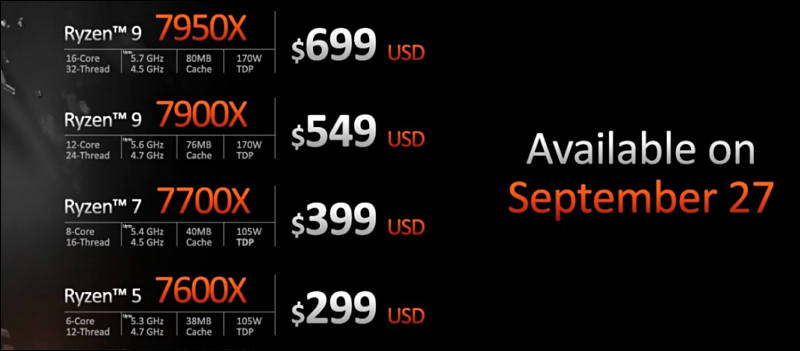

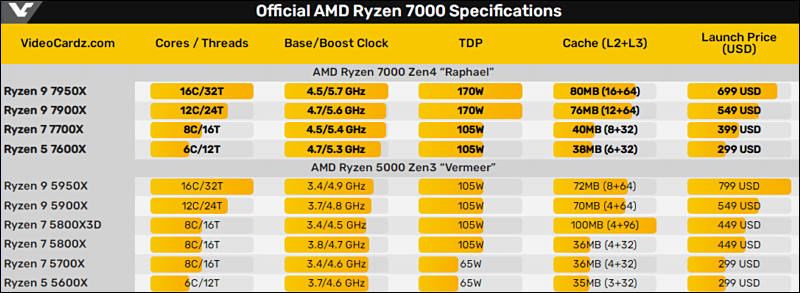

 sa7220.jpg800 x 351 - 36K
sa7220.jpg800 x 351 - 36K
 sa7221.jpg800 x 216 - 22K
sa7221.jpg800 x 216 - 22K
 sa7222.jpg800 x 293 - 69K
sa7222.jpg800 x 293 - 69K
Howdy, Stranger!
It looks like you're new here. If you want to get involved, click one of these buttons!
Categories
- Topics List23,971
- Blog5,724
- General and News1,347
- Hacks and Patches1,153
- ↳ Top Settings33
- ↳ Beginners255
- ↳ Archives402
- ↳ Hacks News and Development56
- Cameras2,360
- ↳ Panasonic990
- ↳ Canon118
- ↳ Sony155
- ↳ Nikon96
- ↳ Pentax and Samsung70
- ↳ Olympus and Fujifilm100
- ↳ Compacts and Camcorders300
- ↳ Smartphones for video97
- ↳ Pro Video Cameras191
- ↳ BlackMagic and other raw cameras117
- Skill1,961
- ↳ Business and distribution66
- ↳ Preparation, scripts and legal38
- ↳ Art149
- ↳ Import, Convert, Exporting291
- ↳ Editors191
- ↳ Effects and stunts115
- ↳ Color grading197
- ↳ Sound and Music280
- ↳ Lighting96
- ↳ Software and storage tips267
- Gear5,414
- ↳ Filters, Adapters, Matte boxes344
- ↳ Lenses1,579
- ↳ Follow focus and gears93
- ↳ Sound498
- ↳ Lighting gear314
- ↳ Camera movement230
- ↳ Gimbals and copters302
- ↳ Rigs and related stuff272
- ↳ Power solutions83
- ↳ Monitors and viewfinders339
- ↳ Tripods and fluid heads139
- ↳ Storage286
- ↳ Computers and studio gear560
- ↳ VR and 3D248
- Showcase1,859
- Marketplace2,834
- Offtopic1,319


